Read - Want some real insight on how this new technology could be a step above what you are currently using?
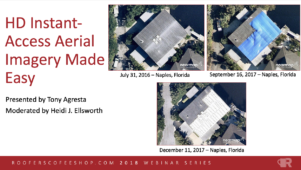
Heidi Ellsworth:
Hello, and thank you for attending today's rooferscoffeeshop.com webinar. This is Heidi Ellsworth and I am very happy, and honored, to welcome Tony Agresta from Nearmap today to talk to us about aerial imagery. If you would like to share it with other roofing professionals within your company, or within your area.
Heidi Ellsworth:
Today, I would like to introduce Tony and have him share a little bit about himself. Welcome to the webinar, Tony.
Tony Agresta:
Thanks a lot, Heidi, really appreciate it, and have enjoyed participating in Roofers Coffee Shop events. The examples that you see, just in front of you, are three different area captures. They're top-down vertical captures for a house in Naples, Florida. You see July 31st and then September 16th, 2017. Then you see December 11th, 2017. Obviously, the blue tarp indicates that there was some damage there and then the roof is being repaired. We're going to show you some really good examples of both, residential and commercial roofing, as we go through this.
Tony Agresta:
I'm VP of Marketing at Nearmap. I've been in the B2B high tech space, all really focused around software data analytics for 30 years. A lot of it has been centered around mapping systems, analytics and, of course, various marketing technologies that we use in our own practice. That's a little bit of background on myself.
Heidi Ellsworth:
Tony, can you just ... I want to make sure everyone can see the screen. I'm getting some comments, so if you just make sure you're showing your screen, that would be awesome.
Tony Agresta:
Yeah, the screen should be seen. It says, “People can see your screen.”
Heidi Ellsworth:
Okay, perfect. Then maybe a little technical difficulty out there in the world, so thank you. We're going to continue. Tony, tell us a little about aerial imagery. Our aerial imagery, Vicki and I, have both been involved in it from the very beginnings in the roofing industry, and what Nearmap is bringing to the market is just phenomenal. Maybe share a little bit about the different types and about Nearmap, overall.
Tony Agresta:
Yeah. Probably the more common forms of imagery that people recognize in the market are satellite imagery and drone imagery. They don't really always think about aerial, which is captured through airplanes that have high performing cameras systems on it. When we look at the different kinds of aerial imagery, we like to look at things like coverage. How much coverage is there worldwide and in the US? Is it current? How clear is the imagery? Is it consistent? Meaning, is it always the same resolution. And it is accessible in the cloud?
Tony Agresta:
If you compare the three kinds, satellite imagery, obviously, is inexpensive or free. Free, typically. The coverage is great. It isn't always current, so you're going to find that it's dated. It is, typically, one foot to one meter in resolution, which means that a pixel on the camera is equal to a foot on the earth's surface or a meter. That isn't as high resolution as either drone or aerial imagery. It will vary in its consistency, in it resolution. But, of course, it is available in the cloud.
Tony Agresta:
In the case of drone, the advantages are it's current and it's always clear, or it's clear if you've flown the drone when it's clear. But it doesn't have a huge coverage model. It sometimes has inconsistent, in terms of the resolution. Then you do have to process it. The advantage of aerial imagery is that, in the US, we're covering 330,000 square miles multiple times a year. It is very current, so you're looking at two or three captures for most aerial imagery for most cities in the US. It's clear. It is all, what's called, sub-inch imagery, or sub-three-inch imagery, which is 2.8 inches. Meaning that one pixel is equal to seven centimeters, or 2.8 inches on the earth's surface. Always consistent. We're always flying sub-three-inch imagery. Then we stream it in the cloud and make it available very quickly.
Tony Agresta:
Those are some of the differences. On the left, you see, in the upper left, and example of a satellite image. But then in the lower left center, you see the same Nearmap captured image, and you see, number one, it's brighter. It's more current. There's a second house. You can detect obstructions on the roof. You can see the type of roof. The type of shingling that's been used on the roof. Those are some of the big differences between aerial and satellite.
Tony Agresta:
You had asked a question about Nearmap. We have been operating for 10 years. Actually, we've had our tenth year anniversary. We're publicly traded on the Australian Stock Market, and we were started in 2018 in Australia. Excuse me, 2008 in Australia. We have about 8,000 customers. They span all sorts of different kinds of industries. Roofing is one, but lawn and landscape, solar, real estate, insurance, are all popular use cases for imagery for various reasons. There are 72,000 users and growing. We have about a petabyte of storage. Meaning, we've taken 60 million individual photos. We are partners with a number of different companies, some specifically in the roofing industry, like RoofSnap. But we're also recognized by Esri, the large mapping company, as the best new content partner for 2017. You can actually see us at the show, if you go to that show in July.
Tony Agresta:
We started with this singular idea in mind, and it's really what we believe in, and what we use to ground our company, and what we do. And that's, “If we change the way you view the world, that we're going to profoundly transform the way you work.” That comes into play in the operations and deployment of resources, and the amount of time you have to drive, and spend on site, and how quickly you can turn around proposal. It doesn't mean that you don't have to go on site, it just means that you're going to be better prepared, you can handle more customer requests, you can handle them more quickly, and you can win business faster. That's a little bit about our company, Heidi.
Heidi Ellsworth:
Yeah. Look, Tony, I just think it's ... This is really interesting and I loved being able to ... A lot of people think that maps or imagery that they get is off satellite. But with yours really being ... I mean, with it all being aerial, and that ability to fly so many times a year. You really are capturing a lot. Can you tell us a little bit more about that capture, management and delivery process? Just so everyone understands how great a tool this is, because it's always so current.
Tony Agresta:
Yeah, sure. Happy to do that. We have a fleet of planes, a lot of Cessnas, that are constantly flying in the US. Obviously, weather is a gating factor, so we have to have very, very clear conditions, and we wait for that. We do capture the imagery very quickly. Any single plane can do hundreds of square miles per day, up to something like 500. These are fast aerial surveys. We have a patented camera system we call, HyperCamera 2. That camera system is mounted inside the plane, so there's a camera hole in the plane, and a stabilization unit. The pilot gets in, flips a switch, they begin to fly as directed, similar to how you would cut your lawn with a little bit of overlap between the passes.
Tony Agresta:
It is a very planned coverage model. You'll see us capture on the East Coast, and then move to the Central, and then move to the West. Then cycle the planes back. We do both spring captures. We call those leaf off captures, because we're capturing prior to the leaves coming out on the trees, which is perfect for the roofers. I'll show you some examples of that. We do leave on captures, as well, in the fall. Therefore, you can see the change over time. Now, when you license Nearmap, you get the historical archive dating back to 2014. We'll show you that, how you can analyze how a roof is degrading, or maintaining its integrity over time using the historical data.
Tony Agresta:
When we do this ... Sorry for the long answer, but it's not only top-down imagery, but it's oblique imagery. That's taken aware between 15 and 45 degree angle of the property. Now, you can go and measure heights. We're known for the ability to manage this and deliver it quickly. Very, very scalable cloud processing services that have been build on Amazon, available within days of capture. We do all the color balancing. We do ortho-rectification. We create a digital elevation model. We connect all the points, because there's a slight pass, and a slight overlap in the pass. You can connect the points from one piece of photography to the next and stitch his all together in a seamless mosaic.
Tony Agresta:
It's delivered in a number of different ways. You can gain access directly through what we call, map browser, and I'll be demonstrating that today. But there are also APIs for all the imagery that we have. That's allowing you to embed it inside a purpose-build product. RoofSnap is a customer of ours. You get access to Nearmap imagery there. There are other roofing partners that we have. Of course, Autodesk, and Esri, and various other partners. That's really key, because it's API integration, where you literally just go register the URL for Nearmap imagery and then you're able to get access to it, right there.
Tony Agresta:
That's a little bit about capture, manage, and deliver.
Heidi Ellsworth:
That's excellent. That is great. For the audience, Tony, you and I are both part of the roofing technology think tank, really focused on technology into the roofing industry, and this is it. This is really what, you and I, both talk about a lot and it's just great to be able to bring that to the Coffee Shop. One of the things that I've been very involved with, for many years, is how do you take this technology and make it work in your roofing business to make money, to grow your business, to have higher productivity, to help with labor costs? I think you have a really great example of how to take your aerial imagery and technologies, and really make it work for the roofing contractor. If you could share that with us, I think that would be awesome.
Tony Agresta:
Yeah, so happy to do that. It really gets into what's the value for a roofer? We like to think of this lifecycle of how you operate and how you do business. We applied this, actually, to just about every industry. Imagery could be used in all phases of the lifecycle. For example, if you're identifying opportunities, you're looking at maybe places where you've completed the roofing project. You're looking at how that's performed over time. For some reason, that just forwarded on me, so let me back up a second.
Tony Agresta:
You maybe looking for roofs that are damaged, roofs with blue tarps, places where you can prospect. Often times you're then going through the lead qualification process. Taking a look at the property from different angles. Looking at the oblique imagery, measuring height, seeing whether, or not, that roof suits your specific business. In doing that, you'll get into measurement and that will be top-down aerial measurements, height measurements, width measurements. You'll begin to estimate what pitch is like. And all the imagery you can export.
Tony Agresta:
You can take it out and you can actually size the file that you'd like to export, include that in the cover of a proposal, with, or without, what we call, map objects, which are the measurements and roads. You can direct your sales force to the right locations. If people are actually on site, but maybe traveling home, you can optimize their time. There might be a sales call that they want to go on, because you've identified a prospect that's on the route that they're driving.
Tony Agresta:
In terms of managing the job, there are things that you can do to annotate the imagery, indicate where you'd like various bundles dropped off, indicate which are the steepest parts of the roof. Then there's ongoing service. You can actually report back, just because you're continuously getting the captures. One of the proactive things to do with both, ongoing service and communication, is to communicate with the existing customers, “Hey, we were just checking out the integrity of the roof. It's been about a year. It's been two years. We just wanted to send you a quick snapshot. Everything is looking good.”
Tony Agresta:
It really does address various aspects of the business lifecycle. I think it's better seeing is really believing, in this case. At this point, if it's okay with you all, I'll take you through a few scenarios.
Heidi Ellsworth:
That would be great. I would love to be ... Really seeing this change, where you're looking year-over-year is something really new to the industry, and I'm excited to see this demo.
Tony Agresta:
I have three scenarios. The first one is more of a prospecting and measurement scenario. The second one is a different property, it's commercial. The first one is commercial, as well. And it's tied to panorama and obliques, so I'm going to show you a few different forms of imagery. Then the last one, we'll switch over to a residential example. And I'm going to focus on leaf on and leaf off imagery.
Tony Agresta:
I'm going to switch applications now. The folks on the line should now see something called, map browser. If you're familiar-
Heidi Ellsworth: I see it, Tony.
Tony Agresta: See it, okay?
Heidi Ellsworth: Yes.
Tony Agresta:
All right. I kind of give away the answer, but it's 14th Street Northwest Washington DC. You see the location there. I'll pause a little bit as I interact with this, because this is ... I want to make sure it's refreshing okay for all the viewers. You can see the capture date here. This is March 18th, 2018. We just flew it. You can see that I can just use my mouse wheel, and I can begin to zoom in. As you get closer, and closer, and I don't have an specific roof that I'm interested in showing you, but you can see that this is what we would call, 2.8 inch resolution. So, one pixel on the camera is 2.8 inches, or seven centimeters, on the earth's surface.
Tony Agresta:
Now, one of the things you could do is, you could look at the historical archive. We have captures of the exact same location for, well, three in 2017. Actually, four in 2016. I would say, "Three," because the capture took place on March 17th and March 22nd, so let's call that one. Then you've got two in 2015 and you have one in 2014. That's what we're known for. We don't ... People don't pay us to go fly. We're just continuously flying and we're making the imagery available very quickly. You could easily hop back to any one of these dates and see what happened with this specific roof.
Tony Agresta:
That's not the one that I wanted to start off with, so let me go to the search bar, here, and let's look at 2615 West Colonial Drive in Orlando. You notice that you're typing in the address, but you could type in location, building, places, that sort of thing. Then quickly you get to that location. This is that fast access. Now, this is on a commercial roofer and I'll play the role that this is a customer that I've actually done this roof for. You can see, we put a little pin right on the roof, and this was captured December 13, 2017. You can see that there are some units on top. There's some sealing that we've done around it. And, actually, I can go back in time, and I can look at what that roof looked like on various dates.
Tony Agresta:
One of the things that's cool about this is I can do it one at a time, or I can go and I can compare side-by-side, so I want to show you that. In this case, I'm looking for roofs that are nearby, that have problems, because, frankly, I'm interested in getting some new business. What I'm doing here, now, is I'm just panning around and I can look around, and I see ... I go back to the most recent capture, I see a commercial flat roof with a considerable amount of damage on the roof. As I zoom in on that a little bit, you can see that it's not in great shape, and it's also a substantial project for me.
Tony Agresta:
If I want to see how this roof changed over time, one of the easy things I can do is look at what's called, a split view. The split view is going to compare one date to another date. In this case, I'm going to go back to what was December 14th, 2014 and I'm going to show you that on the left. I'm going to keep the current view, most recent capture, on the right. I'll zoom in a little bit, here, and you can see that this roof was in pretty good shape three years ago. But, right now, it's not. You can see, as I take the split view tool, and work across the roof, how this has changed dramatically over time.
Tony Agresta:
I'm going to click and turn that split view off, at this point. And I'll go to my current imagery. Now, what I might want to do is I may want to go and measure it. We have a series of different measurement tools that are in place. Right now, I'm just going to show you how I can do a quick area measurement. If you just bear with me a second, I'll show you how that works, because it's not that complicated a roof. It only takes a few seconds, but I can come in here. I can outline the roof. I don't have to be all that precise. Double-click at the end, and it shows me 124,000-plus square feet.
Tony Agresta:
I can go and change that, if I want to, to yards, or meters, or whatever, but I'm just going to keep it there. Now, if I wasn't super precise, it's easy enough to go change it. I can click on any one point and I can go and adjust it. I could, if I had a different kind of roof, I could click on a center piece, for example, and I could go in and actually reshape it, so it's easy to go and navigate, pretty much, anyway you want. I can turn the lines off, but keep the area on. Or I could keep the lines on, and the area on. But, right now, I'll just turn area off. This get into, "Well, what do you want to show your customers?"
Tony Agresta:
Then, if there are certain areas within this, I'm going to just go in and delete this measurement for a second. But if you wanted to zoom in, and you wanted to highlight areas that were particularly troublesome, I could come in, again, click on the area, and now I can come in and do this kind of thing. I mean, you're not limited to how you go and measure. I can navigate around the spot, if I wanted to highlight it. And you get the idea, right?
Tony Agresta:
All of that, I think that demonstrates how you would prospect, look for different areas. But, also, then at a basic level, how you would go in and measure.
Heidi Ellsworth:
Tony, a quick question here. It seems to me, to have this type of tool, even in the office, with estimators, or people who are answering the phone, to take a quick survey of roofs, as customers are calling in, just to get that visual would be really powerful too.
Tony Agresta:
Well, I mean, that's the key thing. People still go on site, but it's great to answer questions. If you have sharing capabilities, it's fine to go to that. We're going to show this a little bit later, but you notice an export option. I can export the image with the measurements on it, if I like. I can send that off. But, yeah, absolutely. Then, answering questions, like, “Well, how has the roof changed between, let's say, February 2016 ...” February 2106 it was in pretty good shape, but time has passed and things are starting to wear down. Yeah, absolutely, that is very useful.
Tony Agresta:
The second example I wanted to show you is a different address. When you license Nearmap, this is how you get it. You can search around to any of the locations. If you're interested in specifically in coverage, because a lot of people ask that. I would say, “Look, we cover 430 urbanized areas.” It represents 72% of the US population. We don't go into extremely rural locations. We default to satellite, in those cases, so you do have something you could look at. If you want to see the coverage models, we have a section right on go.nearmap.com, where you could look at the coverage. You could even type in an address and see how many times we've captured it. But let's go to 7535 Old Georgetown Road in Bethesda, Maryland.
Tony Agresta:
This is more of an urban area, obviously. Again, I'm going to do some prospecting, but on the initial take, these are pretty new high rises. The roofs are all looking like they're in pretty good shape. There's one over here, it's a little bit in the shadows because of the neighboring building, but you can tell that there's quite a bit of damage on that roof. I was actually going in and measuring around this rough spot a little bit earlier. But I wanted to show you how good the imagery was in this case. And the example was this location, which says, “Clark Construction, Clark Companies.” You can see that you have all the detail. You can see the equipment on the roof.
Tony Agresta:
Now, if I wanted to, I can come in here and do a radius measurement. For example, let's say they wanted us to come on the top and repaint, or refresh, the sign. I wanted to see how big that was. I just click on radius, get as close as I can to the center, and come out and estimate the size of it. Now, I can go and adjust the circle, slightly, if I need to. There you go, I've got the area. I click on the center of it and that's 276 square meters. It shows you the radius, the diameter, the circumference. That's all there for you. And, again, you can just quickly go and take those off, if you want to.
Tony Agresta:
One of the things I didn't show you a little earlier, were the line measurements. I can come in, just measure the distance, if I need to. You can put as many line measurements on it as you like, you just have to remember to double-click, because the area is, again, there for you. I can come in, and I can start to any kind of area measurement that I want, and in the process of doing that, I can estimate the kind of material that I need.
Tony Agresta:
To clean this up, just a little bit, I'm just going to go ahead and delete these. You don't have to do that, obviously, but I just ... out of force of habit. Now, I'm going to flip, and we've always been looking at the top-down imagery. We call, vertical imagery, or ortho-imagery. But within the same browser, you could flip to the panorama. The panorama is now going to show you the height of the ... the depth of the parapet, the height of the access to the sign, the height of the building. You could also go in and measure all of this. Again, the same camera system, Heidi, is taking the photo, so it's all multi-sensor.
Tony Agresta:
Panorama is kind of cool, because there's virtually no wait time as I tile. I can just scan all around and, although it might not be refreshing that quickly on your side, you could see really, really good detail on this particular roof. Now, I'm also going to flip to oblique. Oblique, to do the measurements on depth of parapet and heights of anything else, you have to be working off of those source photos. That's part of the secret sauce, but as I go in, although it pixelates a little bit on this monitor, you can see, I can come in, and I can do a height measurement here. I can do another one, just to check it. I can come over here to the sign, and I can see how tall that is. As I zoom out, of course, everything is calibrated correctly.
Tony Agresta:
Now, what I'm going to do is, I'm going to adjust this a little bit, come in a little bit closer for you, and I'm going to do a height measurement here, but I'm going to go from the bottom of the building ... Let's say I was actually doing some scaffolding work. I could, actually, measure the different segments and, of course, you get all the details over here. It's almost 200 feet tall, and you can see the various segments. You could also do width. If I come in and say, “I want to go from this location to that, and then over, and then over.” It's not going to calculate the area, but it's going to calculate the individual segments that are of interest to you, at this point.
Tony Agresta:
We give you those source photos, so what you can do now is you can go in and ... I'm just going to adjust this. You can look at this from different perspectives. Actually, the way obliques work on source photos is, you can just go click on a photo and it's going to show you a different angle. Remember, as the plane is flying over, we're constantly snapping photography, so we're, in essence, getting it at different look angles. That's what we give you inside of obliques. The other interesting thing to mention is that we're calculating a Z-value, which is the height of every single point. What ends up happening is the next evolution of imagery is the digital elevation model and 3-D, which allows you to really immerse yourself directly into the landscape, navigate through streets. And, if time allows at the end, I can certainly show people what that looks like. All captured, also, from HyperCamera 2.
Tony Agresta:
If I go back to my panorama for a second, now I'm going to show you how you can navigate around. I can go take a look at the east perspective, the west perspective. I can see different things as I do that. The south perspective and we're off and running over here.
Heidi Ellsworth:
Tony, I just wanted to point out. I love this. For me, this really talks about production planning. With the ability to do those heights, and to really see everything that's going, as they're trying to put their plans together as a contractor, is to what they're going to do on this roof. This really can be invaluable to the estimators, and the operations folks.
Tony Agresta:
We think so, as well, because instant access, all of the measurement, export capabilities. To that point, if you wanted to come in and annotate, providing instructions, that could be done. I'm just going to put in, “Test annotation.” We'll actually do this a little bit later. And I can continuously go in and add more, and more, text, if I want to, and provide instructions in that way. All of those things that I add can be included as I go and export the imagery. You'll notice, when I do that, it says, “Do you want to include map objects or not?”
Tony Agresta:
In many cases, it's actually going to allow you to export something that's even higher res than you see. It's going to create a larger file, usually, in the 12 meg to about 20 meg range, but all this could be exported and there's no restriction on that. I'm just downloading the image and you can see, maybe, in the lower left-hand side of the screen, it says, "2018 3-18," it a PNG file, and I can open that up, and it's exactly this image, and you can go send it around.
Tony Agresta:
That's a little bit about the commercial side. I had one other scenario that I wanted to show you, and I'll also go into leaf on and leaf off imagery. Let's go back to the search bar and let's work off of 10818 Nantucket Terrace and that's in Potomac, Maryland. So, similar location, but now I'm in more of a residential area. I'll start off with my ... instead of panorama, I'll start off with my vertical, and actually have measurements already on this roof. That's fine.
Tony Agresta:
You can see that, what I've done is I've measured areas that I want to do specific estimating for, in this case. Again, all of that is just go in there and click around, and you're good to go. You can put in any area you want. Then that's perfectly fine. Let's go and look back at a little bit of the history here. Let's go back, in this case ... By the way, this is a late winter spring capture, early spring capture. What you see here is the leaves are off the trees, so it's our leaf off capture. In fact, let me just go in here, for a second, and let me go ahead and take out these area measurements, because I want you to see the leaves as they come on.
Tony Agresta:
This is not a property that has tremendous amount of leaf on, but if I flip back, and I say, “Well, let's look at August 20th, 2017,” now we're in the middle of the summer. Here, the leaves are on, and although it doesn't obscure the roof that much, it does in the southwest corner. It does, to a degree, in the northwest corner. If you go all the way back, you can see how the trees have been changing. You can see whether, or not, the trees are encroaching on the property. What people a lot of times like to do is to then go and flip to both, the panorama and the oblique. They like to measure, sometimes, the height of the trees and, therefore, the height of the building. And they also want to see how close are those trees to the property, itself?
Tony Agresta:
Now, if you look at an east perspective, you can see that this particular tree, which is an evergreen, is really, really close, getting closer over time. And if I wanted to, I could flip over to the oblique side of things. And if I needed to, I could just do a quick height measurement on the tree. And I can see, look, it's 42 feet tall. But this is an example of how you would use leaf on and leaf off imagery to your advantage. If I come all the way out to my panorama, and I look at leaf on imagery, here. We'll go to vertical, and I look at leaf on imagery from August, you can see a big difference.
Tony Agresta:
In this case, these properties are fairly large. Here's one, over here, with the pool, where you're getting the leaves on, and if you wanted to figure out what location that is, you can just click on locate, and then click on it, and that's 10801 Nantucket Terrace, Potomac, Maryland. It gives you the lat/long and then the date of the capture.
Tony Agresta:
We showed you the export capability. We showed you panorama. We showed you measuring height. Those are the kinds of things that I wanted to talk about, Heidi, in the demonstration portion of it. What do you think?
Heidi Ellsworth:
Wow. You know, I love how clear the images are. That you really can see, not only with working with customers, and prospecting, and also just explaining the roofing process to the homeowners, you can use this imagery to really help with that communications, along with production planning. It's pretty impressive.
Tony Agresta:
We like it, and it's getting wide adoption. They were really a restate, and happy to take any questions that come through, but there are really three big things that roofers do. There's identifying opportunities and generating leads. Then there's measuring, estimating, building proposals, and I grouped that all into number two. Then there's the managing the job, the communication process, and ongoing service. To be more specific, what we showed was how to search and find roofs, how to analyze the history, how to look at the variety and the different types of roofs. I didn't show you the road overlay. It's, literally, one click. It shows you the road, it also shows the address. I could certainly go back and demonstrate that for you.
Tony Agresta:
You can go in and prospect anywhere that we have coverage. You could look at new roofs versus blue tarps and come to the party prepared with detailed imagery. This is running on your tablet. Imagine you're selling a location. You're in their driveway, or in their house, you bring it up, and you show them their roof, right there.
Tony Agresta:
Then when you get into the measurement and proposal side, it's all about measuring the various forms of imagery. Then being able to export that with the details, shaping how you want to export it. I didn't show that feature, but you can shape it, if you only want to show just their house. Annotation, including oblique imagery a lot of times, on proposal covers, is a key aspect of this. Then you brought it up earlier, it's instantly responding to requests. People ask these questions and you've got all the facts at your fingertip.
Tony Agresta:
In terms of managing the job and ongoing service, it's going to streamline delivery and the production. You could certainly go and do damage analysis. Of course, we're not going to fly ... We do fly a lot of times after major storms, and we position the aircraft to capture places that were hard hit, mostly for insurance purposes, and roofing, and other kinds of utilities applications. But we're not going to do that all the time, so we did capture Irma, and some of the other big, big storms, so you've got that history.
Tony Agresta:
Proactive reporting, we talked about that. You might as well go communicate with your customers and build relationships by sharing with them, not only the work that's been completed, but how things are stabilizing over time. And you can look at leaf on, leaf off. Then let's not discount the integration with third party tools. Some people want to consume this directly through map browser. Some people want to just go in there and estimate pitch and slope. Others are looking for a very specific calculation. RoofSnap does that with Nearmap imagery. So it's available in other products.
Tony Agresta: If there are questions, I'm happy to take them.
Heidi Ellsworth:
Tony, we do have a couple questions. First off, I'd just like to thank you. One of the things that I think is really new to the industry, in that what you're showing, is the ability to look at roofs over time. As we know, service and maintenance on commercial roofing properties is huge. There's so much deferred maintenance out there, and the really savvy roofing contractors are taking and showing their building owners that imagery year-over-year, and how they're maintaining that roof, and how they're taking care of it.
Heidi Ellsworth:
But, maybe talk just a little bit about the learning curve for either the office staff, or the roof techs out with their iPads. What's the learning curve to understand map browser, and also what kind of training do you provide on that?
Tony Agresta:
Yeah. We have designed the ... I flipped back to the actual map browser, now. We've designed this so that it was really, really simple and anybody can use it. There really isn't much to get started, here. I mean, you're literally just going in and typing in an address, locating a place. I'll even type in Statue of Liberty, just to show you, you can search by location. Actually, yeah, it got me really close there.
Tony Agresta:
Here we go, we're in the right location, at this point. You could come in there and type that in, and you'd get to it, so that's easy to do. The area measurement piece, that's pretty simple to go and do that. We will actually take you through a jumpstart program, where we get you going. We train you on how to do this kind of work, and we show you some of the features, and the functions associated with Nearmap. There's not a whole lot to it, other than that. Radius, text, line, export, width, and then being able to switch back and forth.
Tony Agresta: I would say, “Pretty much, anybody can do this,” pretty easy to do.
Heidi Ellsworth: Heard you well. One of our viewers, Brad, is asking too, “Can you use this on your phone, iPhone, or iPad? Is it in an app?”
Tony Agresta:
Yes, you can absolutely use it on your phone, but obviously streaming real estate is an issue there. I guess, you just don't have a lot. Most people go, and they use it on a tablet, so we're running it on iPads all the time, obviously, desktops. A lot of times, the shows will show this to you on 4-K monitors. A lot of times, if you have a 4-K in your office, it's a great way to go and sell prospects, because you can see it in really, really high res. This is not a 4-K monitor that I'm showing it on, but you could log in through go.nearmap.com if you have credentials, and you could actually search right on your phone.
Heidi Ellsworth:
That's perfect. Another comment too is, this is immediate, which is what roofing contractors need, right away. The ability to be able to just type in an address and go look at it, that would come up pretty quick on the phone, and also be instantaneous for folks in the office or on iPads. That's a big change, instead of waiting 24 hours to get imagery, or whatever it may be through reporting.
Tony Agresta:
Yeah, it really is. You can look at, for example, I just went to New York City, which I just zeroed in on Empire State Building. It's April 9th, 2018. The planes were just there, so you get all that detail. Of course, yes, it does get put into the cloud quickly. We've spent a lot of time, and a lot of money to make sure that the imagery gets to you quickly.
Tony Agresta:
Now, planes are in the Midwest, I believe, heading west. But if you're interested, look at the coverage model at go.nearmap, and you'll see exactly where. But, yeah, that's the whole idea, get it to you very, very fast, and show you the history.
Heidi Ellsworth:
It's perfect. Well, at this point, I think that is all the questions for today. But it was a great turnout. We appreciate Tony so much, your time, and your energy in presenting this. That what you're bringing to the market is just phenomenal, and we're looking forward to all the new technology. I know that your company is going to be providing the industry, as you continue to grow. We would like to also thank you for being on the Coffee Shop. I would encourage all of our listeners, and anyone who's listening to this in the future, to checkout the blogs, the imagery. We have a full gallery with Nearmap. There is so much on the Coffee Shop about Nearmap that anyone can go out there and research. Plus, be sure to visit the Nearmap.
Heidi Ellsworth:
Tony, in fact, if you can go back one slide. I just want to make sure everybody has a chance to see that. That this is where you can get in contact with Tony directly. Email, you can call him. There's the website. Free demos, if you want to get it for your other folks. Just be sure to ... This is where it all comes out and this will also be ... is being recorded and will be on the site to watch in the future, if you want to go through all of that, again.
Tony Agresta:
Thanks a lot for the invitation, and always nice working with you. You guys have a great day.
Heidi Ellsworth:
Thank you, Tony. Thank you so much. Our next webinar will be June 6 and it will feature Mike Morrison with Acculynx, discussing using several types of technology, again, in his sales process. Please visit the Coffee Shop to view all of our webinars on the webinars page, and learn about upcoming events. Thank you so much for attending, and have a great day.

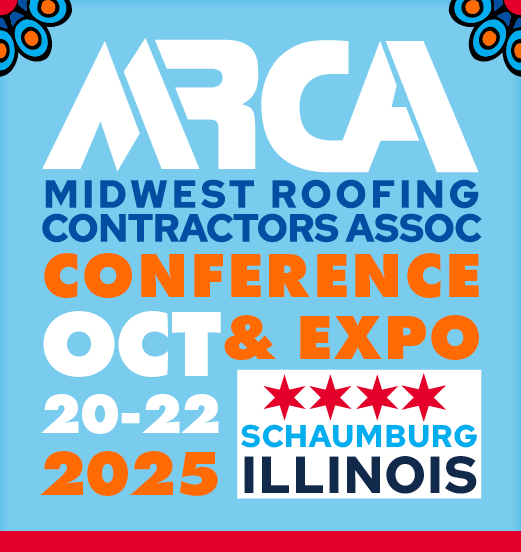

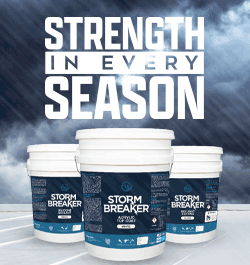
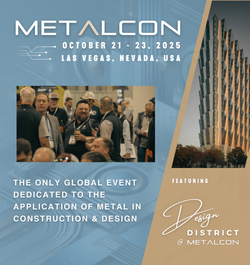








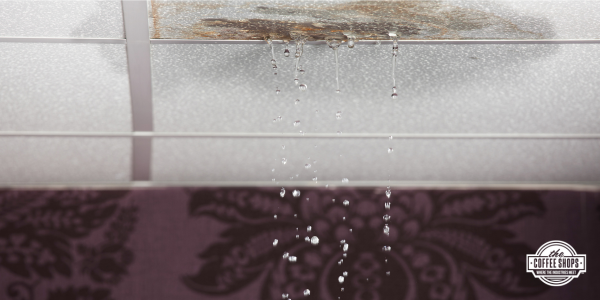






Comments
Leave a Reply
Have an account? Login to leave a comment!
Sign In